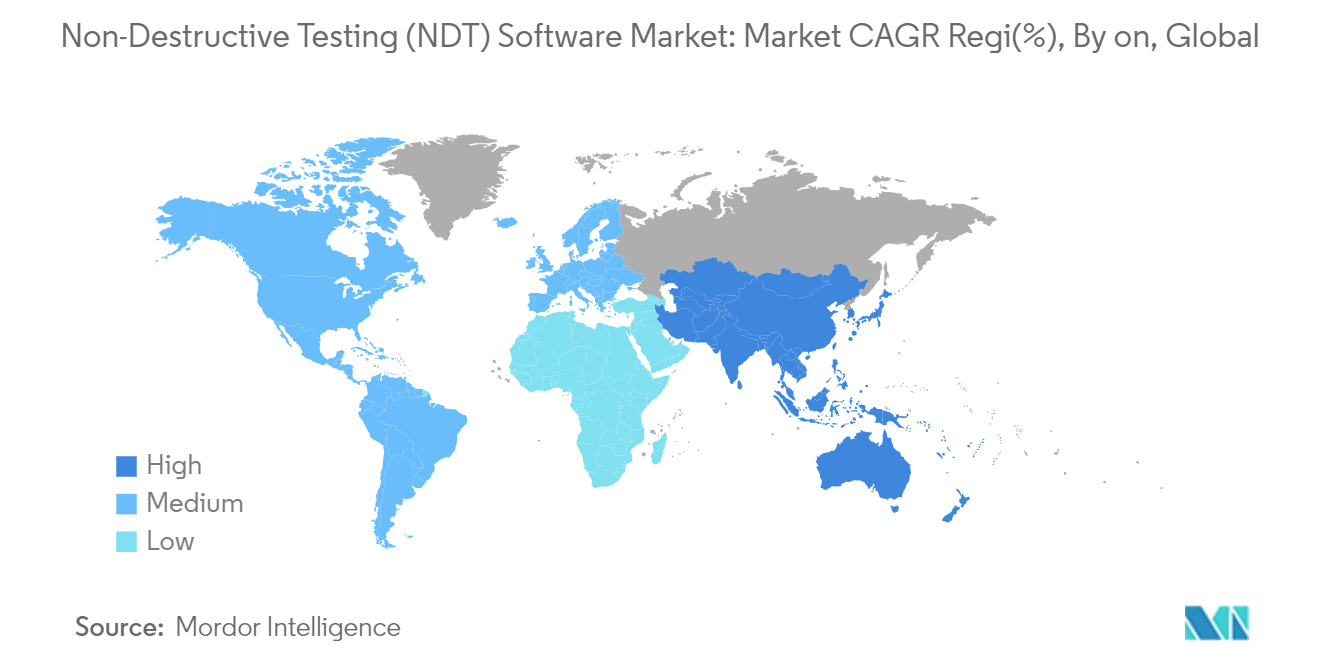Market Trends of Non-Destructive Testing (NDT) Software Industry
Oil and Gas Sector to Witness Major Growth
- The oil and gas industry operates in three sectors: upstream, midstream, and downstream. The upstream sector is responsible for exploration and production activities that involve working in onshore and offshore rigs.
- CUI testing in the upstream industry mainly happens in offshore establishments. Most of the functional oil rigs in the world are offshore. This creates a massive demand for NDT software to confirm CUI.
- NDT in the oil and gas industry is critical for equipment integrity and the safety of petroleum refining and extraction operations. Safely containing potentially hazardous chemicals and fluids within pipes and pressure vessels requires careful inspection of welds and metals for flaws and corrosion using ultrasonic and eddy current NDT testing solutions.
- In the oil and gas industry, the NDT software plays an essential role in flaw detection, material characterization, integrity assessment, and safety assurance. For instance, according to OPEC, the global demand for crude oil is expected to be aimed toward light products, such as gasoline and ethane. In 2045, gasoline demand is forecasted to climb to 27.6 million barrels per day.

Asia-Pacific is Expected to Register the Fastest Growth
- The Asia-Pacific region is expected to grow significantly in the non-destructive testing software market as all the major end-user industries of the market studied are witnessing rapid growth. The penetration of advanced manufacturing and product testing solutions is also growing as significant vendors operating in the market are expanding their global footprint. Quality and product safety are crucial for them to compete with international players.
- The growing manufacturing end-user industries such as petrochemical, paper and pulp, oil and gas, automotive, aerospace, defense, and others are set to boost the market growth rate in the region. The growing demand for renewable energy in the region will add a lucrative growth advantage to the growth of the studied market.
- Moreover, the region's growing automotive industry also supports the market growth during the projected timeline. According to the statistics published by the Japan Automobile Manufacturers Association in 2023, the total number of new car registrations in Japan reached about 3.99 million units, of which about 1.76 million were standard-size vehicles. The number of newly registered mini cars called kei cars and compact cars also increased compared to the previous year. Japan's total number of new motor vehicle registrations reached roughly 4.78 million units, with passenger vehicles representing the vast majority.
- According to the Ministry of Land, Infrastructure, and Transport, electric vehicles (EVs) accounted for about 1.8% of South Korea's automobile market as of May 2023. In addition, the South Korean government has set a goal of increasing the share of electric and hydrogen vehicles in new car sales to 33 by 2030, further supporting the market growth.


